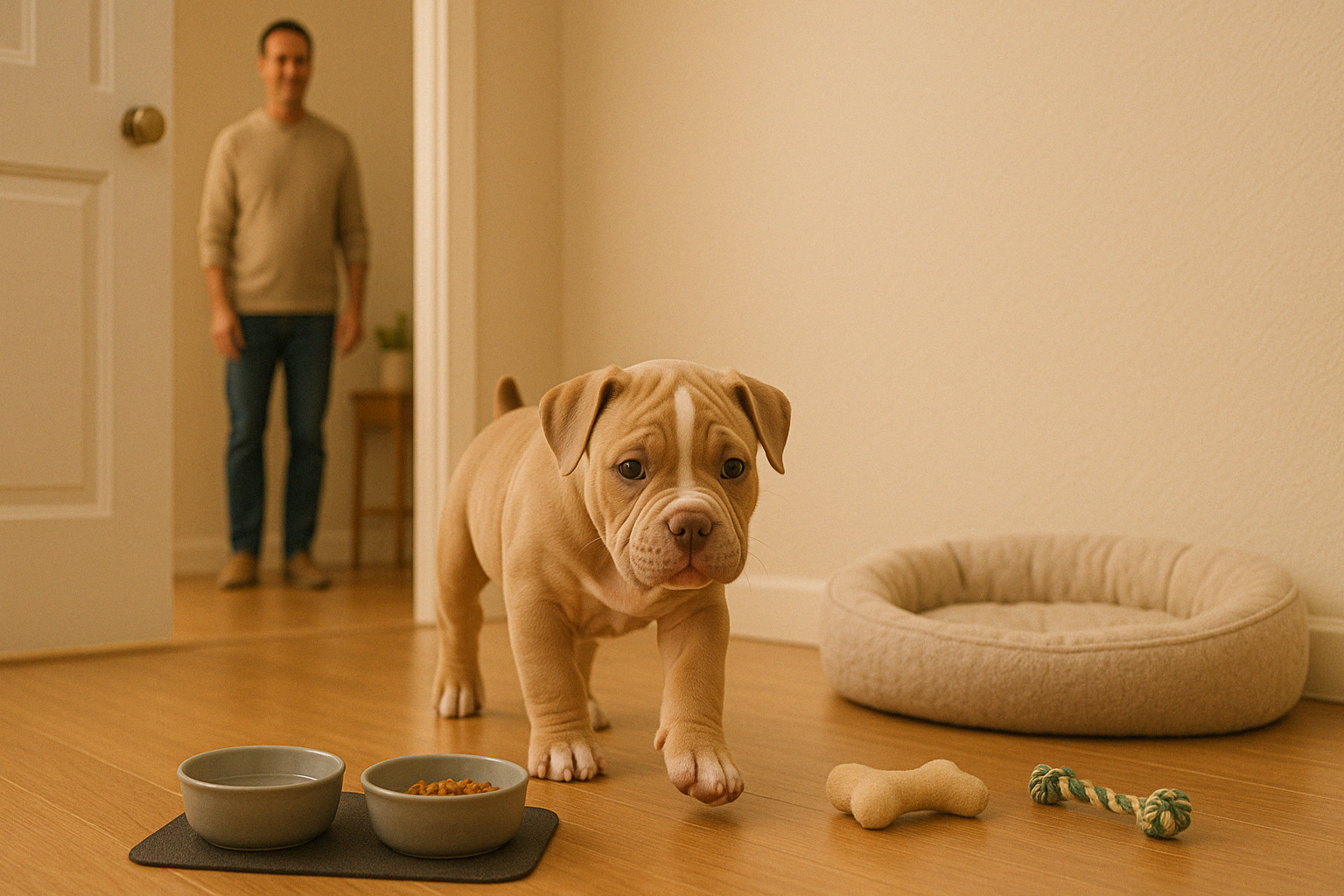Bringing a new dog into your home is exciting, but it also requires careful planning to ensure a safe, calm, and successful adjustment. Whether your new companion is a puppy, an adult rescue, or a second dog joining your current pet, the introduction phase sets the tone for your life together.
In this guide, you’ll learn how to make the transition smooth for everyone involved — including other pets, children, and the dog itself.
Before Bringing the Dog Home
Start preparing even before the new dog walks through the door.
- Gather essentials: food and water bowls, bed, crate, leash, toys, ID tag, grooming tools
- Choose a safe space: set up a calm, enclosed area where the dog can adjust without being overwhelmed
- Dog-proof your home: remove cords, shoes, or anything dangerous or chewable
- Schedule time off: be present for the first few days to supervise and bond
Create a calm, welcoming environment. Avoid loud greetings, big crowds, or excitement in the first hours.
First Day Home – Go Slow and Stay Calm
- Keep the arrival low-key. Avoid over-stimulation or multiple visitors.
- Allow the dog to explore one room at a time.
- Don’t force interaction. Let them come to you when ready.
- Introduce family members one at a time, calmly.
- Allow rest — dogs are often stressed and tired after a major change.
Remember, first impressions matter. Be calm, patient, and gentle.
The First Week – Build Trust and Routine
The first week should focus on creating predictability and a sense of safety.
- Stick to a regular schedule for feeding, potty breaks, and walks
- Establish consistent rules and boundaries
- Begin crate training or quiet-time practice
- Use short training sessions to build communication
- Keep walks short and familiar
Avoid loud environments, off-leash parks, or long car rides until your dog is more comfortable.
Introducing a New Dog to Your Resident Dog
Dog-to-dog introductions should be handled with care.
Step-by-step:
- Meet in neutral territory (like a quiet park)
- Walk parallel, not face-to-face at first
- Allow sniffing if both dogs are calm
- Watch for signs of tension: stiff body, raised hackles, hard stare
- Keep leashes loose and your energy calm
- Bring them home together, but supervise all early interactions
- Give each dog their own space (beds, feeding areas, toys)
Don’t rush bonding — some dogs take days or weeks to feel secure with each other.
Introducing to Cats or Small Pets
Use extra caution with multi-species households.
- Keep your dog on leash during early meetings
- Allow the cat to approach or observe on their terms
- Never force them to interact
- Supervise closely — even if the dog seems calm
- Use baby gates or separate rooms when unsupervised
Some dogs may not be safe with small pets. Monitor reactions and seek help from a trainer if needed.
Helping Children Adjust
Teach children to:
- Give the dog space, especially while eating or resting
- Avoid hugging, pulling, or crowding the dog
- Use soft voices and slow movements
- Always ask permission before petting
Supervise all interactions between kids and dogs, especially in the first weeks.
Common Mistakes to Avoid
- Overwhelming the dog with attention or activity
- Letting them off-leash too soon
- Leaving them unsupervised with resident pets
- Skipping training or structure
- Punishing fear-based behavior
Early mistakes can damage trust. Focus on calmness, consistency, and safety.
Signs Your Dog Is Adjusting Well
- Eating and drinking normally
- Showing curiosity and calm exploration
- Seeking gentle interaction
- Settling into a routine
- Sleeping soundly in a chosen spot
Every dog adjusts at their own pace. Some may take a few days; others, a few weeks or more.
Final Thoughts
Bringing home a new dog is a major moment — for you and for them. By offering patience, structure, and a calm environment, you give your dog the foundation they need to feel safe and loved. A slow, respectful introduction leads to a deeper bond and a smoother life together.
The first impression you give becomes the relationship they trust.

